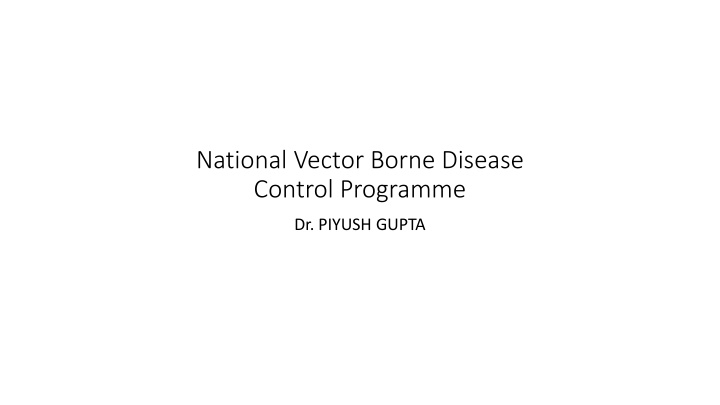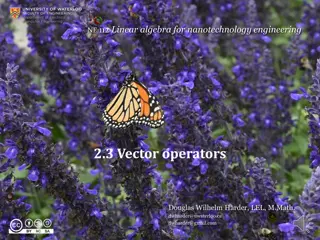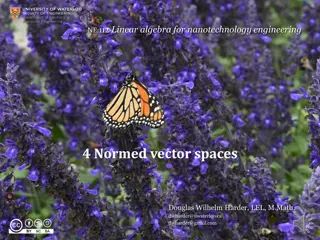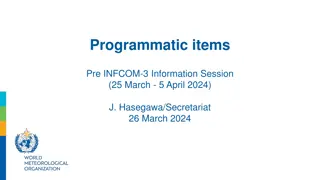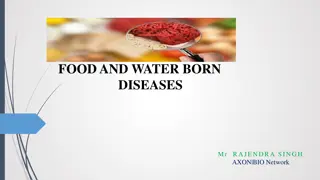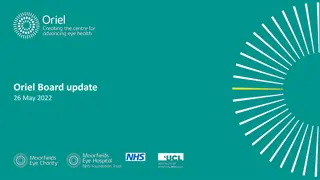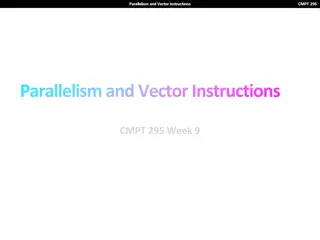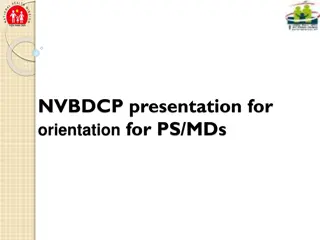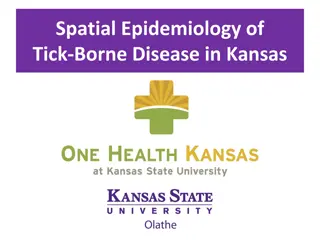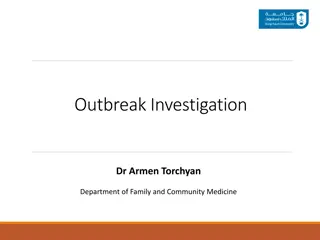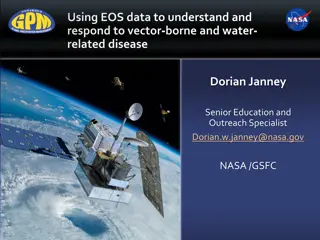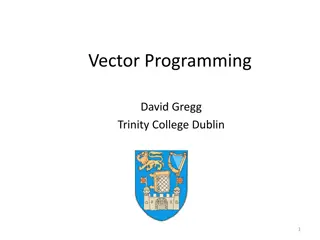National Vector Borne Disease Control Programme Overview
Vectors like mosquitoes transmit diseases to humans. The NVBDCP in India aims to prevent and control malaria and other vector-borne diseases, ensuring marginalized communities benefit from services to achieve national health goals.
Download Presentation

Please find below an Image/Link to download the presentation.
The content on the website is provided AS IS for your information and personal use only. It may not be sold, licensed, or shared on other websites without obtaining consent from the author.If you encounter any issues during the download, it is possible that the publisher has removed the file from their server.
You are allowed to download the files provided on this website for personal or commercial use, subject to the condition that they are used lawfully. All files are the property of their respective owners.
The content on the website is provided AS IS for your information and personal use only. It may not be sold, licensed, or shared on other websites without obtaining consent from the author.
E N D
Presentation Transcript
National Vector Borne Disease Control Programme Dr. PIYUSH GUPTA
Vectors are living organisms that can transmit infectious diseases between humans or from animals to humans. Many of these vectors are bloodsucking insects that ingest disease- producing micro-organisms during a blood meal from an infected host (human or animal) and later inject them into a new host during their next blood meal. Mosquitoes are the best known disease vector. Others include certain species of ticks, flies, sand-flies, fleas, bugs and freshwater snails.
The National Vector Borne Disease Control Programme NVBDCP is an umbrella programme for prevention and control of malaria and other vector borne diseases. Under the programme, it is ensured that the disadvantaged and marginalised sections benefit from the delivery of services so that the desired National Health Policy and Rural Health Mission goals are achieved. The Directorate of NVBDCP under the Directorate General of Health services, Ministry of Health and Family Welfare, Government of India, is the nodal agency responsible for planning, coordination, implementation, monitoring and evaluation of NVBDCP programme at all levels.
Introduction Launched in year 2003 04 Major vector borne diseases Malaria Filaria Kala azar Japanese Encephalitis Dengue / Dengue Hemorrhagic fevers Chikungunya
Mission statement Integrated accelerated action towards Reducing mortality on account of Malaria, Dengue and JE by half Elimination of Kala-azar. Elimination of lymphatic filariasis.
STRATEGIES Early case detection and disease Mx. Epidemic preparedness and rapid response. Integrated vector Mx. Entomological survey . Supportive interventions (IEC, BCC). Vaccination against JE. MDA for lymphatic filariasis.
National framework for Malaria elimination IN India (2016- 2030) Goals - zero case of malaria by 2030. - Maintain malaria free status in area where malaria transmission has been interrupted and prevent reintroduction of malaria.
1. Early case Detection and Prompt Treatment (EDPT) EDPT is the main strategy of malaria control - radical treatment is necessary for all the cases of malaria to prevent transmission of malaria. Chloroquine is the main anti-malaria drug for uncomplicated malaria. Drug Distribution Centres (DDCs) and Fever Treatment Depots (FTDs) have been established in the rural areas for providing easy access to anti- malarialdrugs to the community. Alternative drugs for chloroquine resistant malaria are recommended as per the drug policy of malaria.
Active case detection and passive case detection by MPHW with the help of RDT.
2. Vector Control (i) Chemical Control Use of Indoor Residual Spray (IRS) with insecticidesrecommended under the programme. Use of chemical larvicides like Abate in potable water. Aerosol space spray during day time. Malathion fogging during outbreaks (ii) Biological Control Use of larvivorous fish in ornamental tanks, fountains etc.
Annual parasite index (API)-Malaria cases per 1000 population per year. As per API states are divided into 04 categories . In areas API more than 02- regular 02 rounds of insecticide spray with DDT and Malathion is recommended (dose -1,2mg/meter square) with regular Entomological survey. In areas API less than 02- focal spray is carried out around the falciparum case detected during passive surveillance.
(iii) Personal Prophylatic Measures that individuals/communities can take up Use of mosquito repellent creams, liquids, coils, mats etc. Screening of the houses with wire mesh Use of bednets treated with insecticide Wearing clothes that cover maximum surface area of the body
3. Community Participation Sensitizing and involving the community for detection of Anopheles breeding places and their elimination. NGO schemes involving them in programe strategies. 4. Environmental Management & Source Reduction Methods Source reduction i.e. filling of the breeding places Proper covering of stored water Channelization of breeding source
5. Monitoring and Evaluation of the programme Monthly Computerized Management Information System(CMIS) Field visits by state by State National Programme Officers Field visits by Malaria Research Centres and other ICMR Institutes Feedback to states on field observations for correction actions.
Filaria control program merge with NVBDCP in 2003-2004. Chemotherapy DEC (Diethylcarbamazine) Selective treatment (6 mg/kg X 12 days) Mass therapy (MDA) Ivermectin Vector control
Control of Dengue/ DHF No drug/vaccine available Control of Aedes aegypti only method of choice.
Vector control measures: Environmental management & source reduction Biological control Chemical control Personal protection measures Health education Community participation
DOS AND DONTS DO S AND DON TS Remove water from coolers and other small containers at least once in a week Do not wear clothes that expose arms and legs Children should not be allowed to play in shorts and half sleeved clothes Use mosquito nets or mosquito repellents while sleeping during day time
JE in India JE in India JE viral activity has been widespread in India. The first evidence of presence of JE virus dates back to 1952. First case was reported in 1955 Outbreaks have been reported from different parts of the country. During recent past 15 states and Union Territories have reported JE incidence.
Prevention and control Vector control: reducing the vector density role of insecticides is limited reduction in mosquito breeding (eco-management; source reduction) personal protection against mosquito bites using insecticide treated mosquito nets
JE vaccination Immunization schedule 2 primary doses 4 weeks apart Booster after 1 year Subsequent boosters every 3 years till 10-15 years of age Route of administration SUBCUTANEOUS Dose 0.5ml (<3 years) 1 ml (>3 years)
